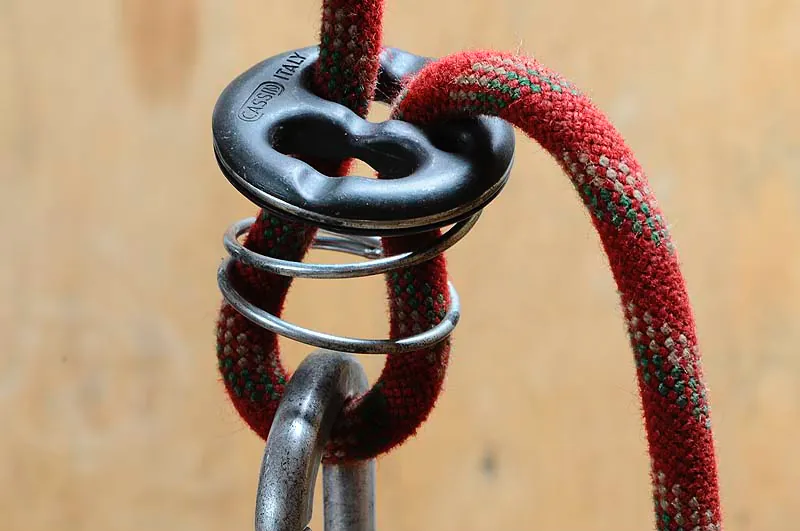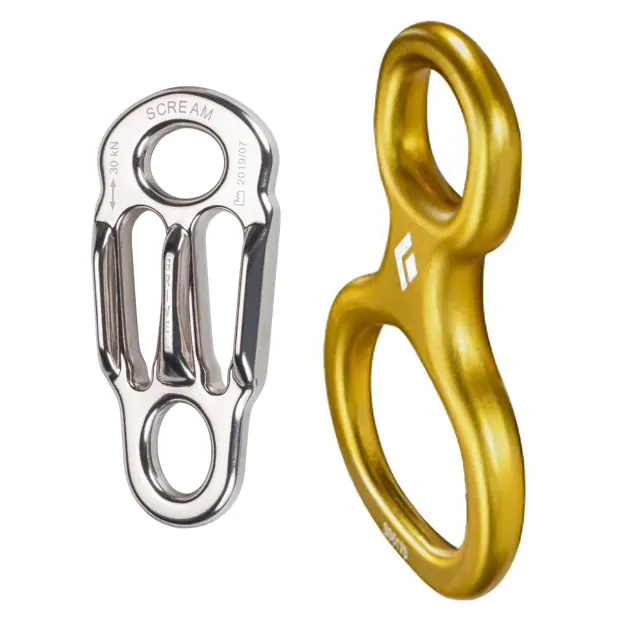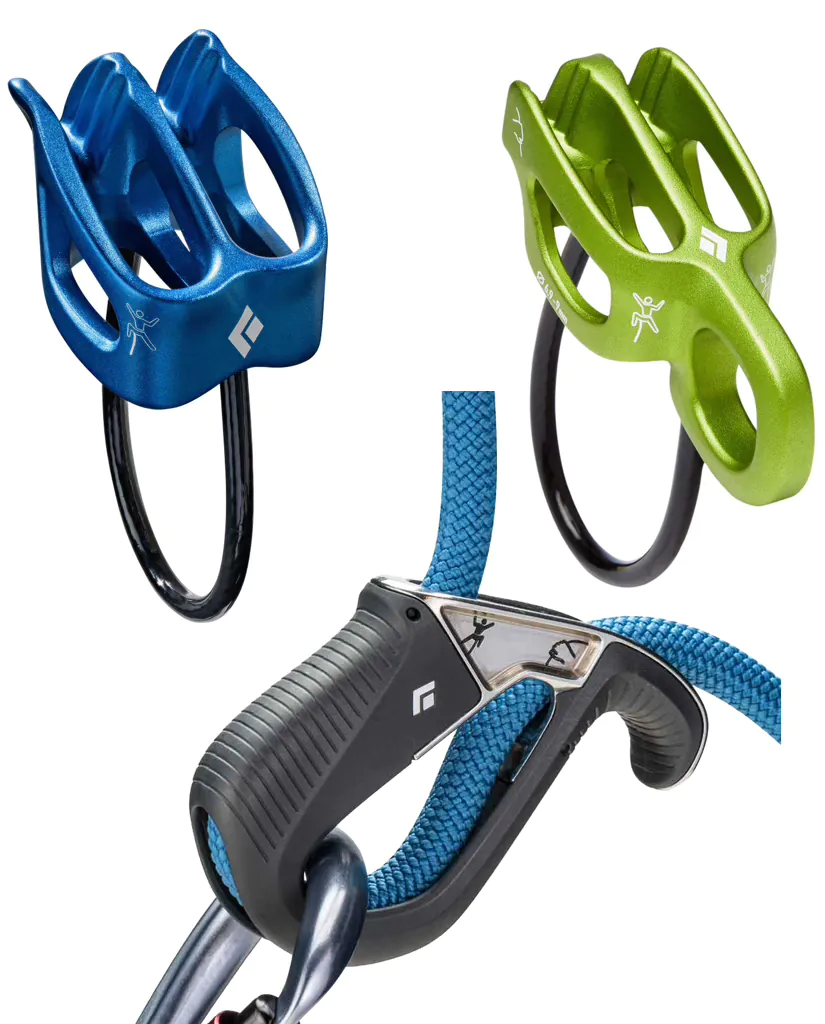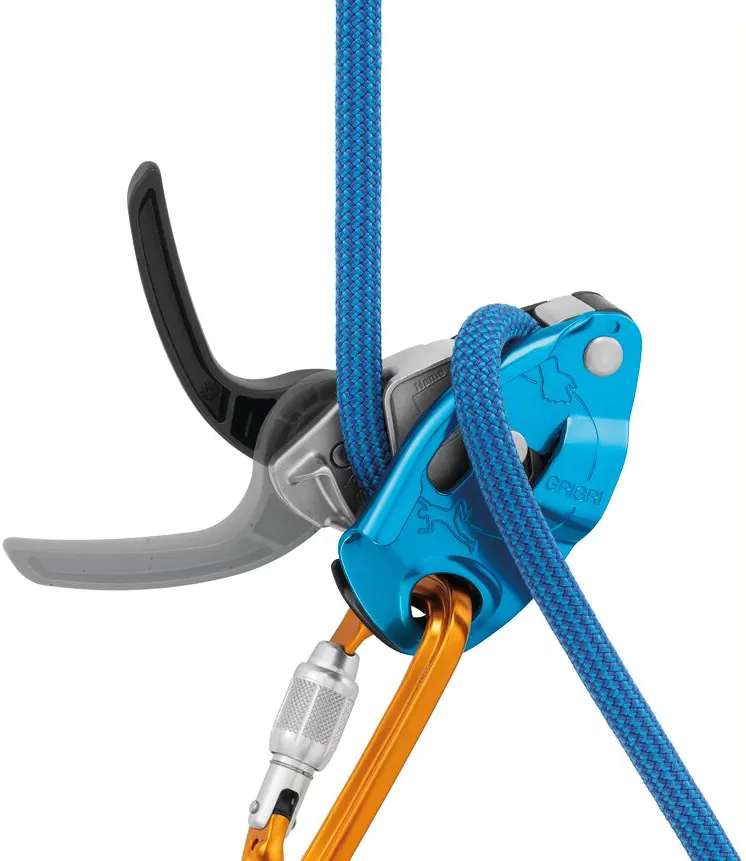Belay devices
Belay devices are an essential part of climbing safety equipment, providing friction and control over the rope to protect from falls.
Before modern devices, climbers mostly relied on body belay and Münter hitch. The Sticht plate, invented in 1969, was the first mechanical belay device. Since then, many plate, figure eight, tubular, and assisted-braking devices have been developed to increase safety and ease of use.
Whatever device you use, NEVER remove your brake hand from the rope!

Plates and figure Eights
Due to their two rope slots and holes for hanging from an anchor, plates are often used by those who climb with twin ropes. Guides and those who like to go fast and light in the alpine also tend to enjoy them for their multifunctional nature of belaying from above, below, and also as a rappel and haul device. Belay plates are mostly utilised in Search And Rescue (SAR) situations, as well as in the hands of trained mountain guides, as they require knowledge to make use of every feature they are capable of.
Figure 8’s are mostly used by canyoneers, military, and rappelling enthusiasts because of their simplicity. With the right experience, Figure 8’s and Modified Figure 8’s (with extra wings) can provide decent friction and belay.
Without proper experience, belay plates and figure 8s can be hard to use and are prone to rope twisting, bunching and jamming, especially on heavy weighted rappels. As there are better modern alternatives, they are not recommended for most climbers.

Tubular belay devices
This category of belay devices is often called ATC, a term which came from one of the first devices of this design by Black Diamond - ATC (Air Traffic Controller). Tubular devices had significantly decreased the effects of rope twisting, and can be used for belaying and rappelling using single or double ropes. Modern tubular devices have “teeth” or ridges at the rope radius area to provide more friction.
Guide mode ATCs were developed to be used for belaying from above, guiding, or on multi-pitch climbs where the leader has to ‘bring up’ their belayer. When belaying from an anchor, a guide mode device can be used as an auto-block.
Passively assisted braking device works mostly the same as ATC. But in case of a fall or sudden braking - the device changes its orientation, forcing tension against the carabiner and blocks the rope from moving; all without any moving parts. Most of these devices work only with one strand of rope.

Mechanically Assisted braking devices
In 1991 Petzl revolutionised belaying by introducing GriGri. Over the last decade most of the major climbing brands created their versions of such devices. Gyms have also embraced them, as the ability to lock up and stop the rope decreases the chance of injury if the belayer is incapacitated or not following correct technique. The main feature of any assisted braking device is letting the belayer’s hand relax from actively pulling down (braking) the rope because the device is holding it.
Mechanically assisted devices employ a moving piece of metal that cams upward, pinching the rope whenever it is pulled through the device too quickly. These devices are also useful in lowering and hauling. Their handle makes it obvious how to release the rope to lower a climber (or hauled items).
Due to moving parts and added complexity, these devices are heavier and higher priced. They also require more diligence and practice in proper use and care.

